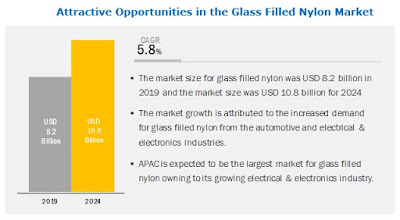The global plastic antioxidants market size is projected to reach USD 2.8 billion by 2024 from USD 2.2 billion in 2019, at a CAGR of 5.0% between 2019 and 2024. The growing demand for plastics in countries such as China, Japan, South Korea, and India from the packaging, building & construction, medical, and automotive industries is expected to fuel the growth of plastic antioxidants in the region. The market is evolving, with major players playing a crucial role in the development of new and advanced products. BASF (Germany), SONGWON (South Korea), and ADEKA (Japan) are the major players in the plastic antioxidants market.
Download PDF Brochure: https://www.marketsandmarkets.com/pdfdownloadNew.asp?id=106598592
The usage of plastic antioxidants is estimated to be highest in polypropylene (PP) polymer resin during the forecast period. Plastic antioxidants are used in polypropylene due to their susceptibility to oxidation and thermal degradation.
The acrylonitrile butadiene styrene (ABS) polymer resin segment is projected to witness the highest growth between 2019 and 2024. The growth of this segment can be attributed to the increasing demand and manufacturing of ABS in APAC, especially in China. Its durable and robust nature drives its demand in various industries, such as home appliances, electrical & electronics, and automobiles.
Based on antioxidant type, the plastic antioxidants market has been segmented into phenolic antioxidants, phosphite & phosphonite antioxidants, and others. The phosphite & phosphonite antioxidants segment is estimated to register the highest growth.
Phosphites & phosphonites are among the most effective stabilizers, as they protect both primary antioxidants and the polymers during processing. Hydrolytically stable phosphites & phosphonites are generally the most frequently used polymer stabilizers.
BASF is one of the leading producers of plastic antioxidants. The company has undertaken expansion as its growth strategy in the plastic antioxidants market. For instance, in 2019, the company opened its first phase of a new antioxidant manufacturing plant in Shanghai. Also, in 2018, the company expanded the production capacity for Irganox 1010 globally. The company aims to better serve the increasing demand from customers in Asia, Europe, and the Middle East & Africa from its regional supply points.
SONGWON is ranked at the second position in the plastic antioxidants market. The company offers phenolic antioxidants, phosphite antioxidants, antioxidant blends, and other antioxidants such as thioesters. The company focuses on new product launches and agreements to remain competitive in the plastic antioxidants market.
Request for sample report: https://www.marketsandmarkets.com/requestsampleNew.asp?id=106598592











